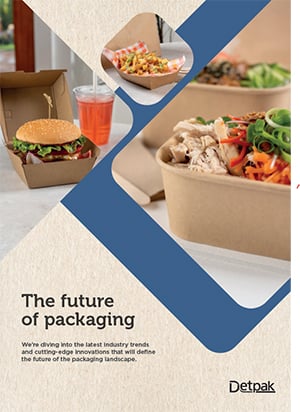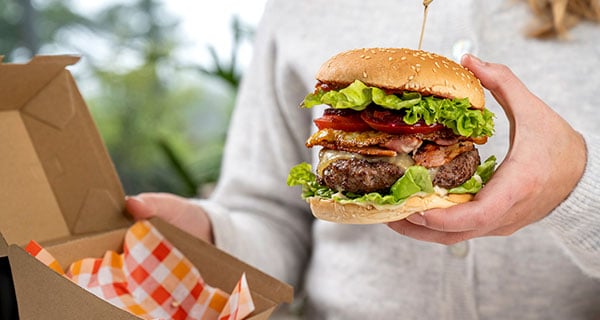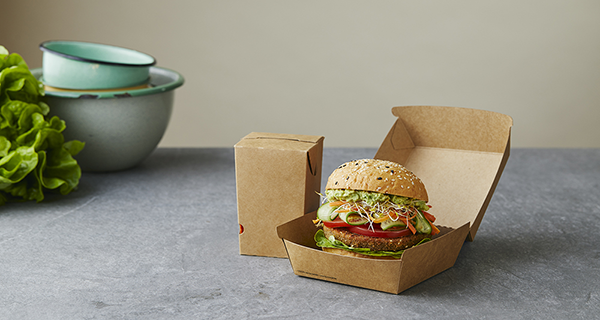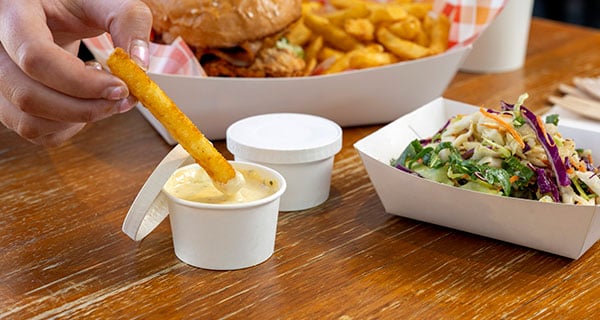What Is An Aqueous Cup?
Consumer demands are changing, especially when it comes to sustainable packaging. Unfortunately, for the environment, single-use cups cause more harm than good. Plus, with single-use plastic bans rolling out across Australia, many manufacturers are moving toward more sustainable packaging solutions. That’s where aqueous cups come in.
Read on to learn more about aqueous coffee cups, what an aqueous coating is, and how it works.
What is aqueous coating?
Aqueous coatings are water-based solutions that are applied to the inner surface of paper products to make them watertight and durable. They are made by submerging synthetic polymers or latex in water and then applying the mixture to the paper. Once the water evaporates, it leaves behind a thin layer of polymers that adhere to the paper fibres to create a barrier that prevents liquid from seeping through.
Aqueous coffee cups are made using this water-based coating. Aqueous coatings generally contain fewer polymers compared to traditional plastic-lined cups and some aqueous coatings are also able to be certified as home compostable to Australian standards (AS 5810), making them a more sustainable choice. As an added bonus, these coatings normally don’t contain any harmful chemicals or toxins and have no intentionally added PFAS.
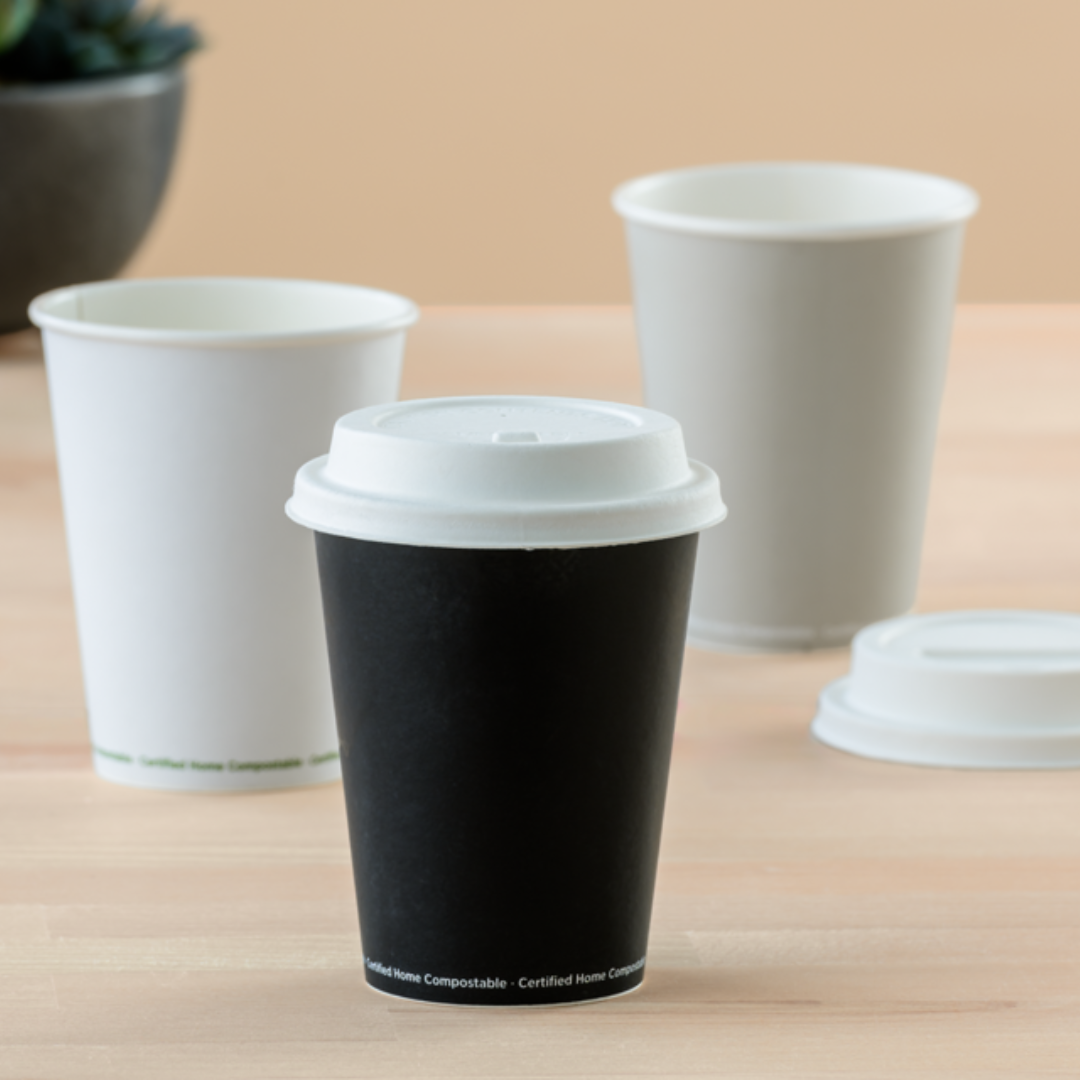
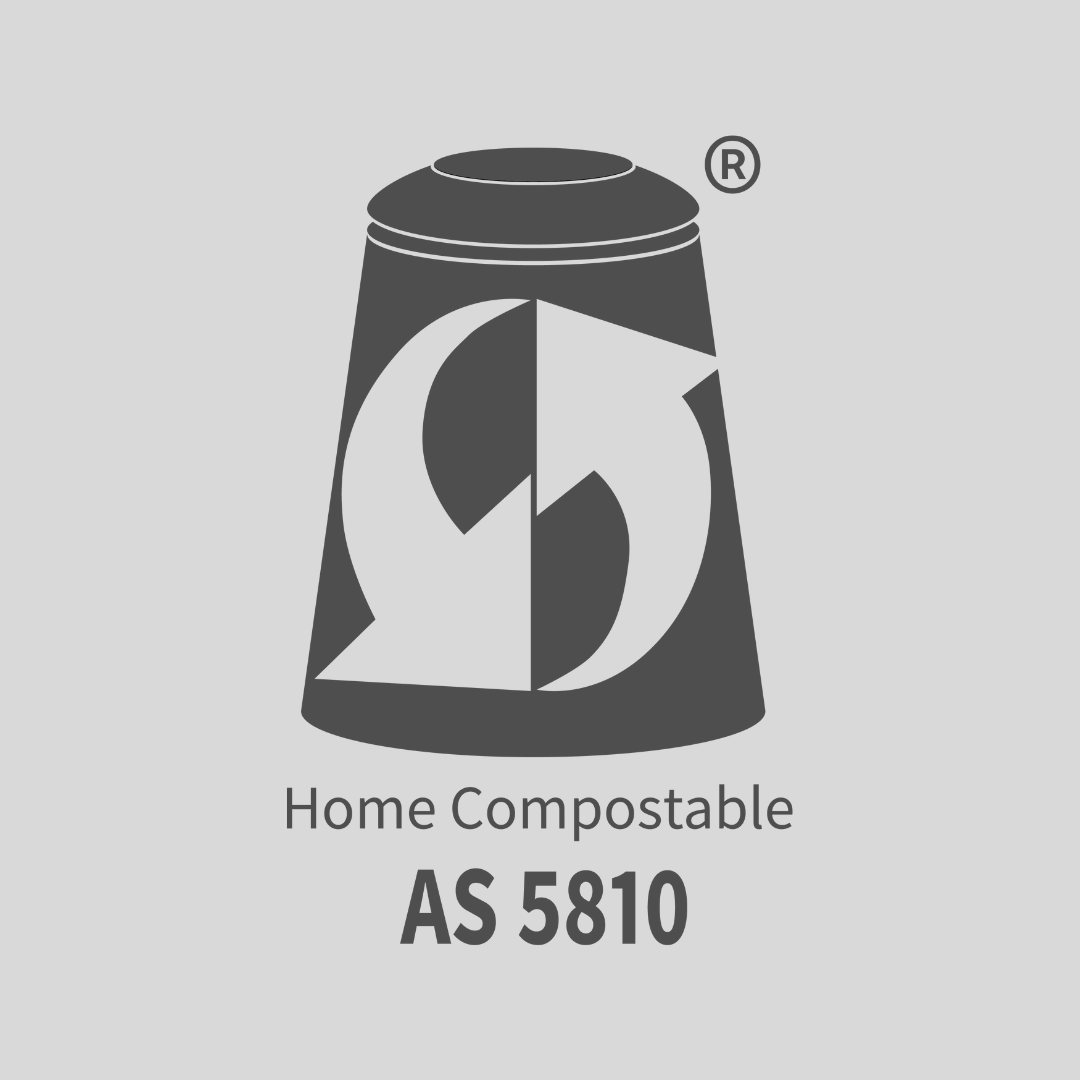
What is the difference between aqueous coating and PE coating?
Short for Polyethylene, PE coating is made from a petroleum-based plastic. Polyethylene (PE) is a widely used polymer known for its flexibility, durability and ability to create a barrier against moisture and gases. PE coating is often applied to the inner wall of food packaging products to enhance moisture resistance, and barrier properties.
While PE-lined containers are durable and reliable, if not correctly disposed of, the plastic lining contributes to plastic pollution and may produce microplastic as it degrades. For many years, PE-lined packaging has been the go-to for food packaging, but as a plastic-based product, it’s no longer considered the gold standard.
On the other hand, aqueous-coated packaging is quickly gaining popularity as a sustainable yet effective alternative. Unlike PE lining, the aqueous coating is a solution that coats the interior wall of the packaging and is then absorbed into the paper to enhance the natural properties of the paper packaging.
Not only is aqueous coating reliable and effective, but it can also be home compostable to Australian Standards (AS 5810). That means that the materials will fully decompose through biological processes in conditions you can easily create in your home composting system.
What is the most sustainable disposable cup?
At this stage, aqueous coffee cups are the most sustainable packaging solution on the market, when it comes to disposable cups. Although aqueous cups aren’t plastic-free, the aqueous solution that they’re coated with contains far fewer plastics than alternative packaging options, like PE lining. Aqueous cups can also be certified to be home compostable to AS 5810, which provides an excellent end of life solution. Good home compostable cups display the home compostable certification logo so you can easily identify them yourself.
Upcoming plastic bans
There’s no denying that single-use plastics, including disposable coffee cups, pose a significant threat to the environment. With this in mind, the Australian and New Zealand governments are taking action by introducing legislation and supporting initiatives that phase out single-use plastics, like APCO’s Towards 2025 National Packaging Targets.
At this stage, legislation around the use of disposable coffee cups differs from state to state. In both Hobart and Western Australia, all single-use plastic coffee cups and lids are already prohibited. In all other states around the country, coffee cups are either under consideration or have bans coming into effect, including coffee cups with a plastic lining. For the most up-to-date information, check HERE
With the impending ban looming, it’s important for distributors, cafes and other businesses that rely on single-use cups to begin transitioning to a more sustainable option, like aqueous coffee cups.
At Detpak, we’re committed to simplifying the transition to sustainable packaging alternatives that are compliant with relevant state legislation as well as Australia’s 2025 National Packaging Targets.
Embrace sustainable packaging solutions with Detpak
As a sign of our commitment to creating sustainable food packaging solutions, we’ve developed our very own line of Aqueous Hot Cups.
Our new range of aqueous coated coffee cups has been designed for home compostability in line with the Australian Standard AS 5810 (ABAP 20219). The cups can be paired with our home compostable Sugarcane Hot Cup Lids, providing a complete home compostable solution for our customers. View the Aqueous Hot Cups flyer today to find an Aqueous Cup solution that suits your needs.

